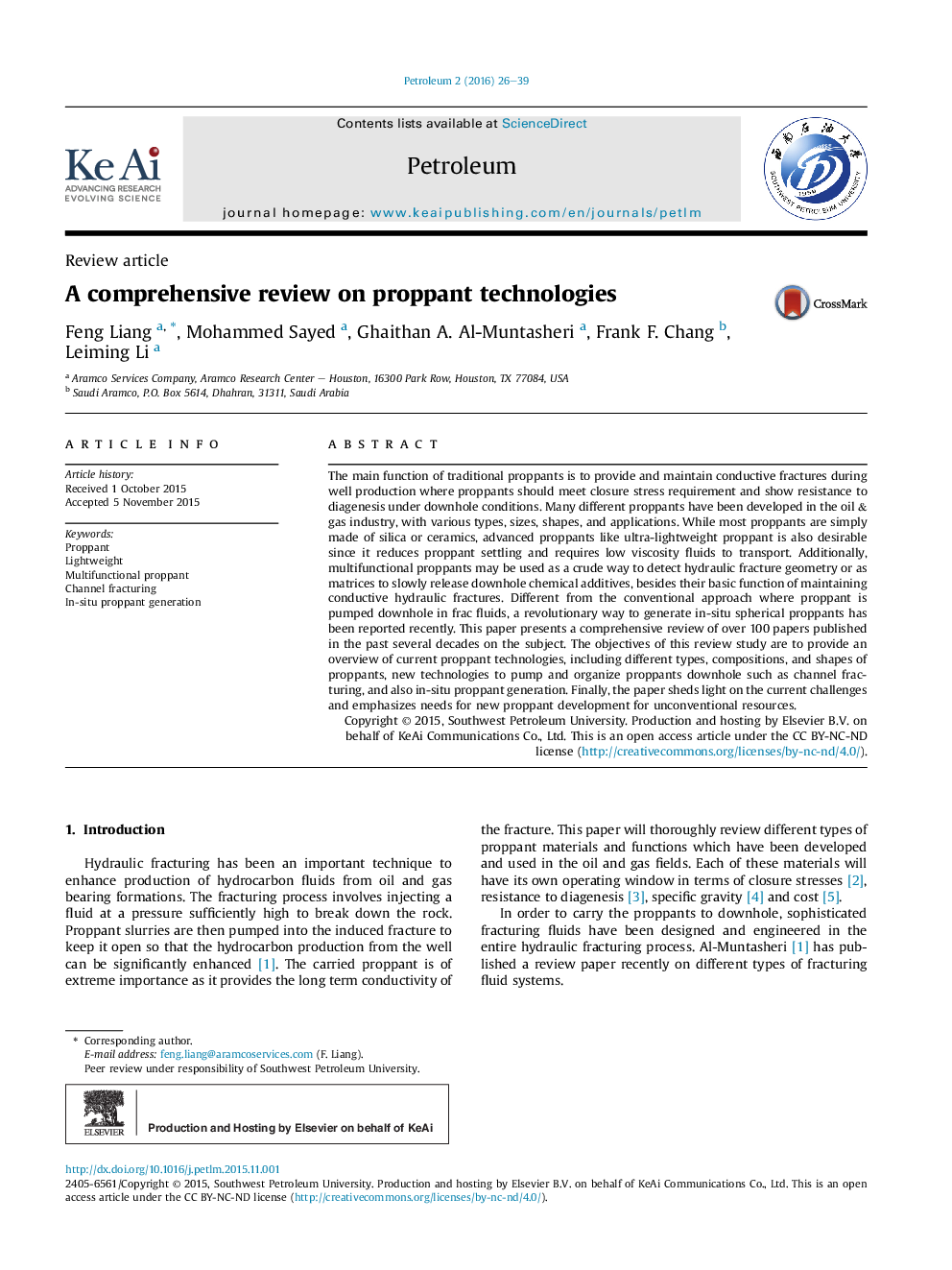| Article ID | Journal | Published Year | Pages | File Type |
|---|---|---|---|---|
| 852722 | Petroleum | 2016 | 14 Pages |
The main function of traditional proppants is to provide and maintain conductive fractures during well production where proppants should meet closure stress requirement and show resistance to diagenesis under downhole conditions. Many different proppants have been developed in the oil & gas industry, with various types, sizes, shapes, and applications. While most proppants are simply made of silica or ceramics, advanced proppants like ultra-lightweight proppant is also desirable since it reduces proppant settling and requires low viscosity fluids to transport. Additionally, multifunctional proppants may be used as a crude way to detect hydraulic fracture geometry or as matrices to slowly release downhole chemical additives, besides their basic function of maintaining conductive hydraulic fractures. Different from the conventional approach where proppant is pumped downhole in frac fluids, a revolutionary way to generate in-situ spherical proppants has been reported recently. This paper presents a comprehensive review of over 100 papers published in the past several decades on the subject. The objectives of this review study are to provide an overview of current proppant technologies, including different types, compositions, and shapes of proppants, new technologies to pump and organize proppants downhole such as channel fracturing, and also in-situ proppant generation. Finally, the paper sheds light on the current challenges and emphasizes needs for new proppant development for unconventional resources.
